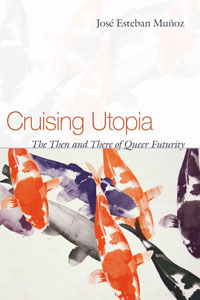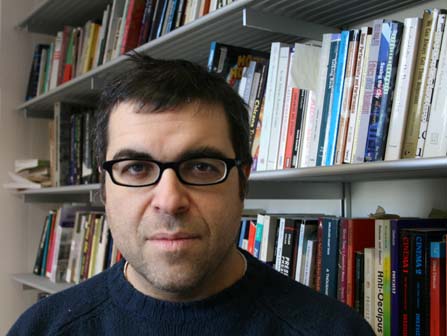 After a weekend Buddhist retreat took me away from season 5 of Star Trek: The Next Generation, I felt casually guilty that I pass so much time off the bridge of my own life, preferring the TV “holodeck” to the here and now that might constitute a more revealed and authentic way of being-in-the-world. I spent the better part of the past two years watching Star Trek. Hearing any captain’s voice recite that line . . . to explore strange new worlds, to seek out new life and new civilizations, to boldly go where no one has gone before . . . elicits an intense pleasure comprised of nostalgia for 90s television and steeped in the escapism of science fiction utopia. Sprinkling a little bit more green into the figurative grinder and watching the next episode, I am not thinking about my future, or any future.
After a weekend Buddhist retreat took me away from season 5 of Star Trek: The Next Generation, I felt casually guilty that I pass so much time off the bridge of my own life, preferring the TV “holodeck” to the here and now that might constitute a more revealed and authentic way of being-in-the-world. I spent the better part of the past two years watching Star Trek. Hearing any captain’s voice recite that line . . . to explore strange new worlds, to seek out new life and new civilizations, to boldly go where no one has gone before . . . elicits an intense pleasure comprised of nostalgia for 90s television and steeped in the escapism of science fiction utopia. Sprinkling a little bit more green into the figurative grinder and watching the next episode, I am not thinking about my future, or any future.
I am a part of the second generation of TNG fans, and in addition to my facile excitement, I also recognize my nighttime reconstruction of a Bush-Clinton era neoliberal Trek paradise as something quite odd. In the Alpha and Beta (and even Delta and Gamma) Quadrants, the ethic of exchange itself, rather than any anachronistic 20th century notions of “profit,” drives a free-market ethos of exploration. The strange and new encounters that structure the extra-global exploits of an egalitarian scientific militarism are problem-solved by a crew of trained industry professionals.
It is important to note, however, that my boyish fantasizing in the mode of Star Trek’s Liberalism is not completely ingenuous in the orthodox sense. It is a play between the critical and pleasurable. The tears that fell to my cheek during the final episode of the franchise or the sense of pride that I inhabit when Picard argues for Data’s humanity are a part of the show’s invocation of affect. The groans and chuckles through which I ironize the show and its philosophizing, while still feeling attached to and enjoying its clichés, anachronisms, and shortcomings, temper my viewing and detach me from it. The watching of older television is, like so many recipes for armchair enjoyment, one part authentic identification, one part pleasurable critique. I think this is what Frederic Jameson characterized as the tendency towards an aesthetic that is “affect-less.” He noted in the canonical essay “The Cultural Logic of Late Capitalism” that the lack of an atomistic modern subject accounts for a postmodern regime of pastiche accompanied by “the waning of affect.” He continues:
This is not to say that the cultural products of the postmodern era are utterly devoid of feeling, but rather that such feelings . . . are now free-floating and impersonal and tend to be dominated by a peculiar kind of euphoria.
Perhaps Jameson’s diagnosis is perfectly typified in the pleasures that emerge from a singular streamed viewing experience, or the interstellar poetry of the inoffensive Beige plastic (uncannily similar to the hard beige casing of early PCs designed to fit into their corporate architectural homes) interior of the Starship Enterprise. Nonetheless a cynical critique of mine and my Dad’s favorite television show doesn’t quite account for what it is attempting to explain — that is, my sassy taste for science fiction.
Only a little over a month ago, the queer theorist and performance studies scholar José Esteban Muñoz died unexpectedly. In his truly singular work, Cruising Utopia: The Then and There of Queer Futurity, he called for a new, queer way of thinking about utopia: “We must dream and enact new and better pleasures, other ways of being in the world, and ultimately new worlds.”
The first time I read that statement, I immediately heard the voice of Captain Jean-Luc Picard. But it is not as the call for some sort of queer manifest destiny that I wish to read this provocation. The science fiction of queer theory doesn’t load like an episode. It is not the march towards the future that is interesting for Muñoz, but the way in which we inhabit the world in the here and now, specifically the radical potential of our dreams and pleasures to overcome the bonds and strictures of the present. In the immediate context of Lee Edelman’s work No Future, Muñoz responded with a vision of queer-ness not without futurity, but fully invested in the future as a complex critical engagement with the past. He calls this idea “hope” and characterizes it as “a critical methodology . . . best described as a backward glance that enacts a future vision.” In doing so Muñoz not only expanded the possibilities for thinking of queerness as a horizon, but also challenged and refigured what a term like critical methodology might really mean. His sense of utopia must be read as addressing the situation of critique more generally, as an event which enacts rather than denatures, as a view of contemporary aesthetics that presents alternatives to Jameson’s periodization of an “affect-less” postmodernity. 
When I met José last summer, it was as a research assistant for his colleague Professor Tavia Nyong’o at NYU Tisch. I was planning an event for a research project they were conducting together and I needed to make sure their reading group would be able to meet in a park in Manhattan. When I asked shyly if there was anything else besides the basics I should account for he looked at me and asked me dryly to “please make sure there will not be a baby parade that day.” Looking back on the brief period I spent acquainted with him, and reading the beautiful posts written for him at Bully Bloggers, I think Professor Muñoz’s sense of humor — both generous and biting — is what explains his critical and queer methodology. Professor Muñoz argued that risking oneself and one’s identity amounts to the site for thinking utopia.
Muñoz challenges us to understand excitement and the sass that contours a reading of a work or the experience of a moment as critical methodologies of queerness. This is why in his compelling view something like the deadpan of Warhol, which might serve as an example of that nebulous ironic orientation of the postmodern aesthete, becomes a temporal rift on which we can float a feeling of the utopic. He wagers the question,
What if we think of these modes of being in the world — Warhol’s liking of things, his “wows” and “gees,” and [Frank] O’Hara’s poetry being saturated with feelings of fun and appreciation — as a mode of utopian feeling but also as hope’s methodology? . . . Perhaps we can understand the campy fascination that both men had with celebrity as being akin to this sense of astonishment.
This way of reading works is a critical futurism that is uniquely optimistic.
I write this partially as a response to the unexpected death of a theorist whom I had the opportunity to meet, and whose work I want to re-read and re-read and read more of. It is also a reminder, however, of how a glance back at a work is an invitation to imagine our present so as to make possible a better, or at least sassier, future. José Muñoz is no longer with us, “utopia is not yet here,” a Star Trek episode has loaded in another tab, and his call to explore strange new worlds will continue to both incite and necessitate its own re-reading.
This post may contain affiliate links.







